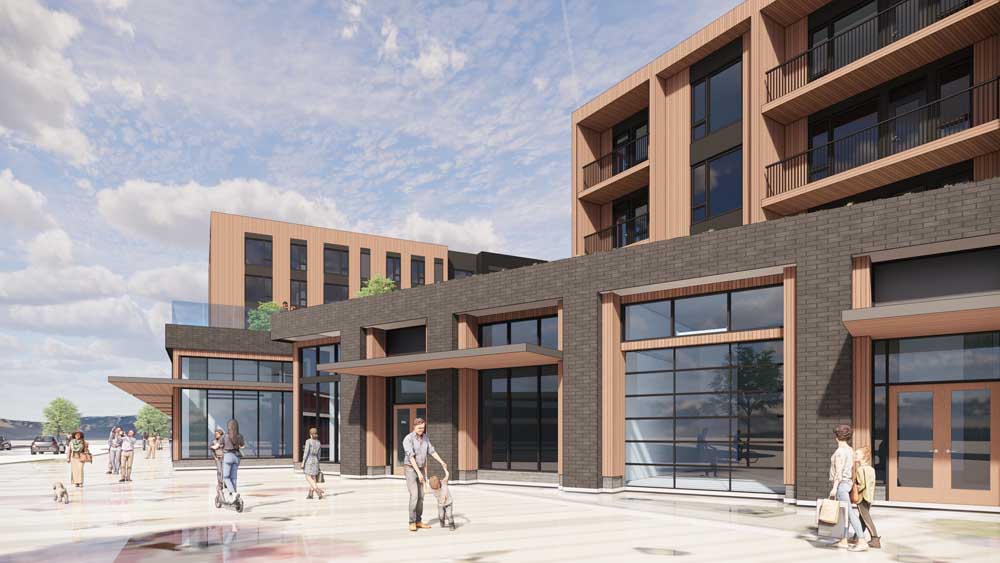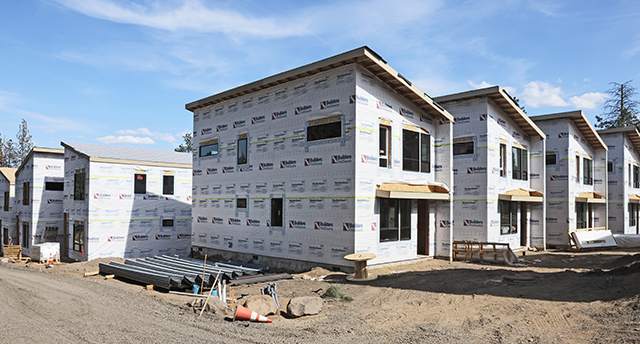Trump tariffs could blunt already stalling Oregon homebuilding, other construction, industry reps say
Published 9:38 am Monday, February 10, 2025

- Oregon builders compete with data centers for electrical supplies, causing delays in construction.
President Donald Trump’s proposal to impose 25% tariffs on goods imported from Canada and Mexico stands to further constrict already declining Oregon homebuilding, as well as other construction, industry representatives say.
Canada and Mexico this week cut last-minute deals to put off tariffs by a month, while an added 10% tariff on Chinese products still went into effect. But with the threat still hanging over North American trade, new tariffs would only “inflame Oregon’s housing crisis,” said Preston Korst, policy and government affairs director with the Home Building Association of Greater Portland.
Builders would experience the most acute price hikes in softwood lumber from Canada, the material gypsum used for drywall, electric transformers and kitchen appliances, he said, all of which have already gone up in price in recent years.
The mere threat of tariffs adds uncertainty to an industry that doesn’t need it, Korst said. Nerves among investors already make it difficult to attract the kind of money needed to pay for new home construction, he said.
“Adding tariffs to that equation can only put Portland’s housing production goals at a further disadvantage,” Korst said.
This comes after Oregon lawmakers just last month heard from economists about the dismal state of housing production in Portland, where the fewest apartments are under construction since at least 2011.
Nationwide, Oregon is second only to Connecticut for not building enough homes for its residents, economists with ECONorthwest told the House Committee on Housing and Homelessness, on Jan. 22.
“The situation has gotten worse in the last decade,” Lorelei Juntunen, the company’s president and CEO, told the committee.
The following week, the committee heard from Oregon’s chief economist, Carl Riccadonna, that the state needs to construct 29,500 homes a year to match the demands of its growing population. Last year Oregon permitted about 14,000 units.
“We’re in a very bad position,” Riccadonna told lawmakers of current production rates, stressing that the state needs “supply, supply, supply.”
A trade war that jams up international supply lines would diminish homebuilders’ ability to add to the supply, said Korst, the industry lobbyist.
“Given the headwinds local homebuilders are already facing — like a limited land supply, high interest rates, permitting delays, infrastructure needs, workforce shortages — the last thing we need right now is rising material costs from tariffs,” he said.
That frustration translated to some in commercial construction, too.
Mike Salsgiver, CEO of the Associated General Contractors Oregon-Columbia Chapter, said tariffs create unpredictability, which is bad for investors, contractors and developers.
“Tariffs are just not good for construction,” Salsgiver said, adding that he sees them as a solution in search of a problem. “We’re still not sure what problem is trying to be solved.”







